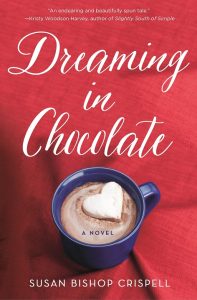Uncovering the Heart of a Story
 It’s easy to think that writers sit down at a computer, words flying from their fingertips, and knock out their next novel without a moment’s pause. There are definitely some authors who can do that. But for the majority of us, it’s more like a million self-inflicted papercuts to our hearts trying to get the right words on the page. Excruciating, yes. It can also be cathartic too.
It’s easy to think that writers sit down at a computer, words flying from their fingertips, and knock out their next novel without a moment’s pause. There are definitely some authors who can do that. But for the majority of us, it’s more like a million self-inflicted papercuts to our hearts trying to get the right words on the page. Excruciating, yes. It can also be cathartic too.
Writers put a part of ourselves into every book we write, and knowing the subject matter, setting, or even just how a character reacts to a specific plot point imbues the story with authenticity. And this authenticity is what draws readers in and keeps them turning the page. Here’s where the well-known writing advice ‘write what you know’ can go sideways though.
When an author writes what they know in exactly the way they experienced it, it’s usually a snooze-fest. That’s because authors are not our characters. A situation that was hilarious or heartbreaking or utterly life-changing to us in real life won’t translate the same way with fictional characters who bring a different history to the table. Each experience, each choice the characters make, and each desire they have changes what that author “truth” means.
And, if not handled with care, those differences can undercut the authenticity we try so hard to create.
This is even more important to do well when there’s something other-worldly involved in the story, whether it’s magic, or creatures, or an alternate reality or history. Getting that feeling of “realness” right is crucial to getting readers to connect with the characters.
I was struggling to get this right with an early draft of my latest novel Dreaming in Chocolate. My protagonist, Penelope, led a charmed life, minus the one great love that broke her heart and made her doubt the magic she’d always believed in. She had a thriving business, a delightful eight-year-old daughter who rarely gave her a moment’s stress, and an apothecary table that gifted magical chocolates. While pitching the book to my agent for the first time, she said, “That sounds great, but you need to make Penelope’s life harder. There’s no tension, no conflict.”
In other words, I needed to make my character suffer.
But how? I knew the story problem needed to tie into the magic (because what’s the point of magic if it doesn’t cause a little mischief, right?), which meant I needed to better understand the rules for this world I had created. So, I set about defining those magical rules first. Once I knew the magic’s purpose and limitations, I had a place to start. Up next was figuring out how this magic that allowed people to not only dream of their futures but also alter that future if so desired could go wrong for Penelope. For a character who’s believed in this magic her whole life, who uses it daily to help her neighbors, the magic would have to go spectacularly wrong to shake her faith.
So, I thought about something I knew, which for me ended up being brain tumors since I’d had one removed a few years prior, and how some part of that truth could both motivate and create obstacles my character, and therefore the larger story. I mean, what could be worse for a mother than to have a daughter with a brain tumor that is killing her and knowing there’s not a darn thing she can do about it? Not even with an entire table full of magic at her disposal.
I didn’t want it to be a sad story though. I like hopeful and huggable stories, after all. Which meant that the brain tumor, while always looming, always threatening their happiness, couldn’t be the focus. Like the magic, the brain tumor was a catalyst for my characters’ decisions. Penelope uses Ella’s illness as the fuel to ensure her daughter checks as many items off her young bucket list as she can. And Ella clings to her belief in the magic, certain that even if it can’t save her, it can bring love back into her mom’s life so Penelope won’t be lonely after she’s gone.
Uncovering this one defining limitation of the magic and coupling it with a small experience from my life cut right to the emotional heart of the story that had been missing in all my previous attempts. And suddenly, the whole story opened up in front of me. While the words didn’t pour out of my head in one coffee-induced writing frenzy, they certainly came faster and so much easier.
—
Susan Bishop Crispell earned a BFA in creative writing from the University of North Carolina at Wilmington. Born and raised in the mountains of Tennessee, she now lives twenty minutes from the beach in North Carolina with her husband and their literary-named cat. She is the author of THE SECRET INGREDIENT OF WISHES (2016) and DREAMING IN CHOCOLATE, which releases on Feb. 6, 2018. As you might expect, she is always on the lookout for hints of magic in the real world.
About DREAMING IN CHOCOLATE
 With an endless supply of magical gifts and recipes from the hot chocolate café Penelope Dalton runs alongside her mother, she is able to give her daughter almost everything she wants. The one sticking point is Ella’s latest request: get a dad. And not just any dad. Ella has her sights set on Noah Gregory, her biological father who’s back in town for a few months – and as charming as ever.
With an endless supply of magical gifts and recipes from the hot chocolate café Penelope Dalton runs alongside her mother, she is able to give her daughter almost everything she wants. The one sticking point is Ella’s latest request: get a dad. And not just any dad. Ella has her sights set on Noah Gregory, her biological father who’s back in town for a few months – and as charming as ever.
Category: Contemporary Women Writers, How To and Tips

























